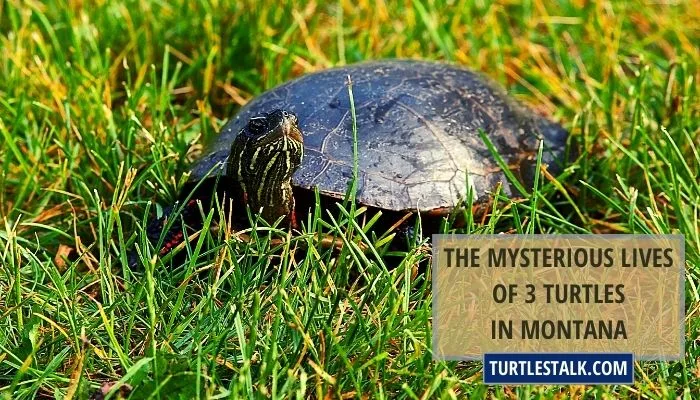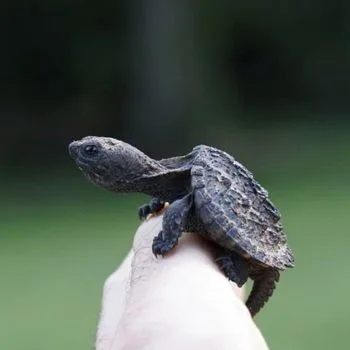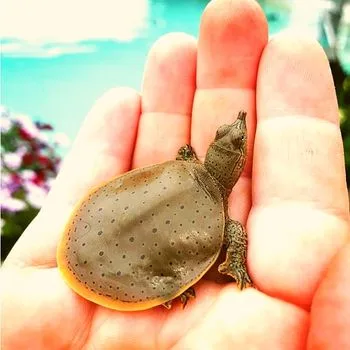The Mysterious Lives of 3 Turtles in Montana
Ah, Montana – home to many things including some of the most majestic turtles in the country. But did you know that there are only 3 species native to this great state? That’s right: Western Painted Turtle, Common Snapping Turtle, and Western Spiny Softshell Turtle!
Unfortunately for these little guys, their habitats are often threatened by human activity such as construction and traffic. In fact, one of these species—the Western Painted Turtles—are currently endangered due to its habitat being located along a highway near the Ninepipes Wildlife Refuge in Montana.
The Confederated Salish and Kootenai Tribes have been working hard to protect them against this danger!
| # | Name | Details | Image |
| 1 | Common Snapping Turtle (Chelydra serpentina) |
| 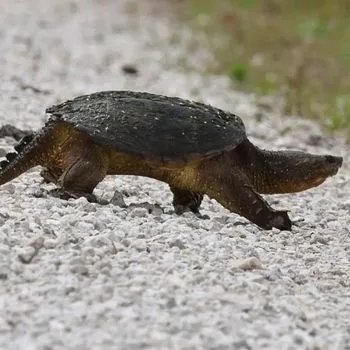 |
| 2 | Western Painted Turtle |
| 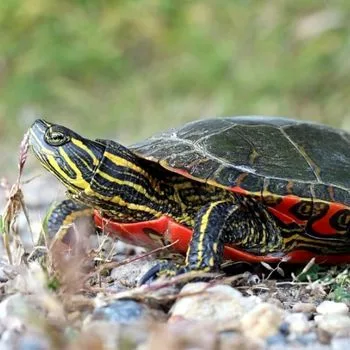 |
| 3 | Western Spiny Softshell (Apalone Spinifera) |
| 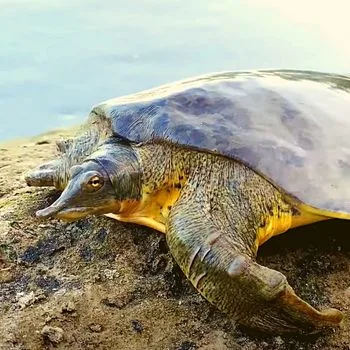 |
3 Turtles You Can Find in Montana
In total, there are 3 species of turtles in the state of Montana. This guide will take you on an exploration through each turtle type and provide tips for providing them with proper care. So, let’s get started on our journey into discovering all the wonders that these reptiles have to offer!
1. Common Snapping Turtle (Chelydra serpentina)
- Family: Chelydridae
- Genus: Chelydra
- Type: Freshwater turtle
- Natural Habitat: Freshwater habitats such as lakes, rivers, and swamps
- Lifespan: 50 years
- Maximum Size: 19 inches
- Maximum Weight: 40 pounds
- Prone to Diseases: Fungal infections and shell rot
- Aggression Level: Not aggressive until provoked
- Predators: River otters, bears and coyotes
- Domestication: Not recommended as pets
The Common Snapping Turtle, scientifically known as Chelydra serpentina, is an aquatic species native to freshwater habitats such as lakes, rivers and swamps. These turtles are highly adaptable and can live up to 50 years in the wild.
Adult Common Snapping Turtles typically measure 10-16 inches in shell length but can grow up to 19 inches and weigh around 40 pounds. They have a powerful bite with an estimated pressure of over 600 psi, making them one of the strongest biters among reptiles. Despite their strength they are generally not aggressive animals, though it is best to not provoke them and take caution around them.
Common Snapping Turtles often face threats from predators such as river otters, bears and coyotes when living out in the wild.
Unfortunately, their habitat is also threatened by human activities such as development and pollution which can lead to a decrease in population numbers if conservation efforts are not taken soon here in Montana.
Although they make fascinating pets due to their long lifespan of up to 50 years when cared for properly, some states have regulations or restrictions on owning them so check with local authorities before acquiring this species as a pet.
These turtles have webbed feet for swimming and a long tail for propulsion allowing them to move quickly through water which also makes them difficult prey for predators.
Furthermore, although they occupy multiple states across North America from Alabama to Wyoming there is no other name than the Common Snapping Turtle so it’s easy to identify.
It should be noted that this species does not carry any significant disease that can be transmitted to humans yet they may still be prone to diseases like fungal infections or shell rot when kept in unsanitary conditions so proper care must be taken here in Montana when considering owning one of these remarkable creatures as a pet.
2. Western Painted Turtle
- Family: Emydidae
- Genus: Chrysemys
- Type: Aquatic turtle
- Natural Habitat: Likes bodies of water with soft mud floors and abundant aquatic plants, e.g. rivers, lakes, wetlands, oxbows, ponds, ditches, and reservoirs.
- Lifespan: Usually 20 – 30 years, but in better habitat can live up to 50 years
- Maximum Size: 4 – 6 inches
- Maximum Weight: Gets about 1 pound
- Prone to Diseases: Vitamin deficiencies, metabolic bone disease, and intestinal parasites
- Disease Carrier: Salmonella
- Aggression Level: Aggressive baskers
- Predators: Raccoons, skunks, foxes, herons, other birds, snakes, and large predaceous fish
- Domestication: Can be kept as pets
The Western Painted Turtle, scientifically known as Chrysemys picta bellii, is an aquatic creature native to North America. It can be found in states such as Montana; making its way up right into British Columbia in Canada. Adults typically measure between 9-10 inches in length while juveniles/hatchlings are smaller at around 2-3 inches.
They live in freshwater habitats such as ponds, rivers and lakes where they swim with ease due to their long tails and streamlined shells of webbed feet. Although usually not aggressive creatures, they have predators that include raccoons and herons among others which make them a species of special concern in some regions.
In most US states it is legal to keep Western Painted Turtles as pets with proper care but one should always check local regulations for necessary requirements first.
3. Western Spiny Softshell (Apalone Spinifera)
- Family: Trionychidae
- Genus: Apalone
- Type: Freshwater turtle
- Natural Habitat: Freshwater turtle
- Lifespan: 40+ years
- Also Known As: Aspidonectes asper, apalone hudsonica, trionyx ater
- Maximum Size: Males: 5 – 10 inches, females: 8 – 20 inches
- Maximum Weight: 20 – 26 lbs
- Disease Carrier: Salmonella
- Predators: Otters, large fish, raccoons, crows, alligators, bald eagles, fire ants, water snakes and foxes
- Domestication: Can’t be pet
Have you ever heard of the Western Spiny Softshell? This unique freshwater turtle is found in states like Montana. It can measure up to 10 inches long for males and 20 inches for females, weighing around 20 to 26 pounds!
This species bears a uniquely patterned carapace which wears off as they age resulting in a dull brownish or olive-green color. Its spines make it quite distinct from other turtles that inhabit its habitat. They are solitary creatures with minimal interaction amongst themselves unless competing for mates when kept together in captivity.
Sadly, their vulnerability makes them an easy target for predators like otters, large fish, raccoons and crows who prey upon these majestic creatures that so many people admire! That’s why conservation efforts are important to protect their delicate habitats so generations can continue enjoying them now and far into the future.
Final Words
In the state of Montana—a place rich in biodiversity—turtles play a significant role; with a variety of species dwelling in its forests, beaches, and rivers.
In this article, we took a closer look at these fascinating creatures (including their natural habitats, lifespan, size and weight, predators, and domesticability). It’s worth noting that, while keeping these turtles as pets is legal; their populations in Montana may be declining due to habitat loss and collection for the pet trade.
It is our responsibility to ensure that these turtles remain protected and preserved for future generations to enjoy in the state of Montana.
Other Nearby States:

